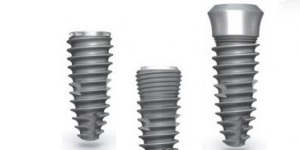
فلزات و آلیاژها
2015-09-16
ایمپلنت های داخل استخوانی و زیر پوستی
2015-09-19The general consensus about the most corrosion resistant biocompatible metallicbiomaterials are the special metals namely-titanium, niobium, tantalum and their alloys, followed by cobalt based alloys and finally the stainless steel grades .The most commonly used implant
prostheses material used today has been summarized ISO and alloy designations Commercially pure titanium and its alloys are known for their use in medical application owing to their good corrosion resistance, biocompatibility and bioactivity in the human body .Titanium and its alloys have been used as prosthetic material in several reconstructive and respective procedures in human body since many years . The use of dental implants in the partial and complete edentulism has become the primary treatment regimen in the modern dentistry. These implants appeared as early as late 1920’s and gained widespread usage during the last 2-3 decades
Although these biomaterials have good mechanical and biological properties there corrosion resistance is still critical for the overall success of the treatment procedure
It has been long recognized that the corrosion products formed as a result of metal-environment interactions have a significant bearing on the biocompatibility and long term stability of the prostheses/implant. The material used must not cause any biological adverse reaction and must retain its form and properties during function
Nowadays, osteo-integrated implants/prostheses can be regarded as well proven safe alternatives on a large scale to functionally rehabilitate both partially and completely edentulous patients. One of the chief success factors related to modern titanium implant system is the achievement of a fast and tight interconnection between the implant surface and the bone tissue owing to its low thermal conductivity, low density, lower elastic modulus mismatch compared to bone, high hardness, outstanding
biocompatibility and remarkable corrosion resistance The prerequisites of a successful implant system have been summarized in Figure






